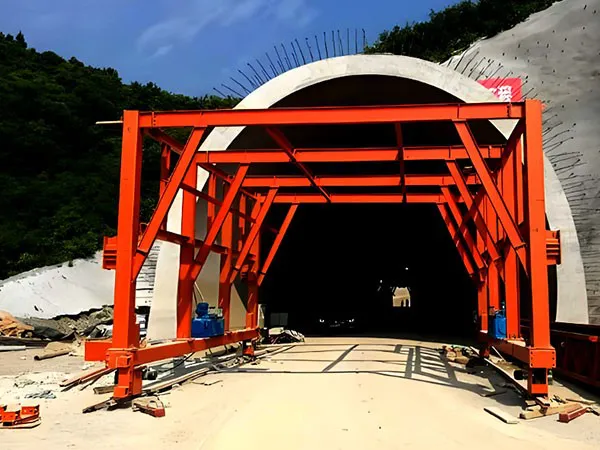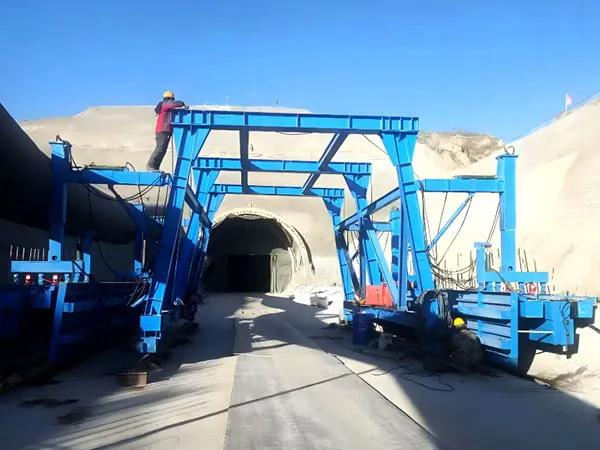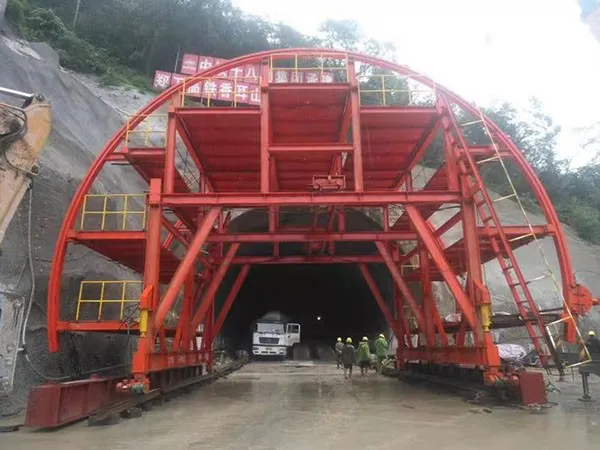Reducing noise from tunnel lining equipment is crucial for worker health and safety, environmental compliance, and maintaining good relations with nearby communities. Noise in tunnels is often amplified due to the confined space and hard, reflective surfaces. Here's a breakdown of strategies, following the hierarchy of controls (elimination/substitution, engineering controls, administrative controls, PPE).

Equipment Selection (Procurement):
Specify Low-Noise Equipment: When purchasing or renting equipment (TBMs, segment erectors, grout pumps, ventilation fans, locomotives), specify maximum noise emission levels in the tender documents. Request noise data from manufacturers (sound power levels).
Choose Quieter Technologies: Opt for electric or hydraulic systems over noisier pneumatic ones where feasible. Use variable speed drives (VSDs) for fans and pumps so they only run as fast as needed. Consider modern, quieter engine designs for diesel equipment.
Engineering Modifications to Existing Equipment:
Engine/Motor Enclosures: Install well-sealed acoustic enclosures around noisy engines, motors, and pumps (e.g., grout pumps, generators). Ensure adequate ventilation for cooling, often requiring silenced air inlets and outlets.
Silencers/Mufflers: Fit high-performance silencers to engine exhausts and ventilation fan inlets/outlets. Ensure they are correctly sized and maintained.
Vibration Isolation: Mount noisy components (engines, pumps, gearboxes) on vibration isolators (rubber mounts, springs) to prevent vibration from transferring into the equipment structure or tunnel lining, which then radiates noise.
Hydraulic System Noise: Use low-noise hydraulic pumps, accumulators to dampen pulsations, and flexible hoses instead of rigid pipes where possible to reduce vibration transmission.
Conveyor Systems: Use low-noise rollers, belt materials, and ensure proper alignment and tension to minimize noise. Enclose drive units.
Grouting Equipment: Use pulsation dampeners on pumps. Enclose mixers and pumps if possible.
Segment Erectors: Ensure smooth hydraulic operation. Maintain components to prevent jerky movements or impacts.
Damping Materials: Apply damping materials (e.g., constrained layer damping) to large vibrating panels on equipment (like enclosures or guards) to reduce noise radiation.
Regular and Proactive Maintenance:
Lubrication: Keep all moving parts well-lubricated.
Tightening: Regularly check and tighten loose bolts, panels, and components that can rattle or vibrate.
Component Replacement: Replace worn bearings, gears, seals, and other parts before they fail and become excessively noisy.
Balancing: Ensure rotating parts (fans, motors) are properly balanced.

Acoustic Barriers/Screens: Erect temporary acoustic barriers around particularly noisy stationary operations (e.g., a grouting station). Effectiveness in a tunnel can be limited due to reflections, but can help shield specific work areas.
Local Enclosures: Build localized enclosures around specific noisy processes or workstations within the tunnel lining area.
Acoustic Absorption:
On Equipment: Attach sound-absorbing materials to the inside of equipment enclosures.
In Tunnel (Limited Use): While difficult due to the harsh environment, strategically placing durable, fire-resistant acoustic absorption panels near major noise sources might help reduce reverberation locally, but this is often impractical during active lining.
Tunnel Lining Itself: While primarily structural, the finished tunnel lining will eventually change the acoustic environment, often reducing reverberation compared to the bare rock/earth tunnel.
Scheduling: Plan noisy operations during shifts with fewer personnel present, or schedule them sequentially rather than concurrently if possible.
Operating Procedures: Train operators to run equipment smoothly, avoiding unnecessary high speeds, rapid changes, or impacts (e.g., careful placement of segments). Shut down equipment when not needed.
Noise Zoning: Designate high-noise areas and restrict access. Provide designated "quiet zones" or break areas with lower noise levels where feasible.
Distance: Maximize the distance between workers and noise sources where possible (e.g., remote operation, positioning non-essential personnel further away).
Worker Rotation: Limit the amount of time individual workers spend in high-noise areas by rotating job tasks.
Noise Monitoring: Regularly monitor noise levels to identify problem areas, assess the effectiveness of controls, and ensure compliance with regulations.
Training: Educate workers on noise hazards, the importance of noise control measures, proper equipment operation for noise reduction, and the correct use of PPE.

Hearing Protection: Provide appropriate and comfortable hearing protection (earplugs, earmuffs) with the correct Noise Reduction Rating (NRR) or SNR for the measured noise levels.
Selection & Training: Offer a choice of hearing protection types. Train workers on proper insertion/fitting, maintenance, and replacement. Ensure consistent use in designated areas.
Holistic Approach: Combine multiple strategies for the best results.
Early Planning: Incorporate noise control into the tunnel design and construction planning phases.
Regulations: Be aware of and comply with local and national occupational noise exposure regulations (e.g., OSHA, MSHA, EU directives).
Durability: Choose materials and solutions robust enough for the harsh tunnel environment (dust, moisture, abrasion).
Fire Safety: Ensure any acoustic materials used (absorbers, enclosure linings) meet fire safety standards for underground environments.
Consult Experts: Consider engaging acoustic consultants specializing in industrial or construction noise for complex situations or major projects.
By systematically applying these strategies, focusing first on reducing noise at the source, significant reductions in noise exposure for tunnel lining workers can be achieved.
Gaofei
Address: 200m east of tulip garden, group 12 of zhangling community, hongshan street office, hongshan town, xigong district, Luoyang
Tel: +8616638856888
Contact: Gaofei Huang
Mobile: +86-18637923976
Phone: 0379-80881719/ 0379-60162687
QQ: 286827457
E-mail: gaofei@gf-bridge-tunnel.com